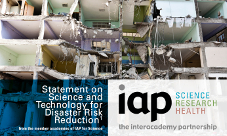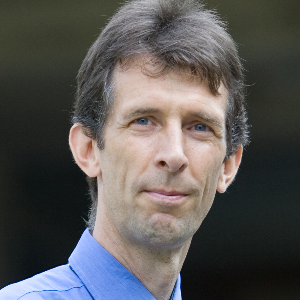


IAP for Science today issued a statement on ‘Science and Technology for Disaster Risk Reduction’.
The Sendai Framework for Disaster Risk Reduction 2015-2030, which the world’s nations signed up to in March 2015, calls for increased input of science, technology and research to deal with the risks of natural disasters and manage their impacts. Strategies need to be developed to reduce disaster risks before an event, manage the emergency as it happens, ensure effective recovery afterwards, and enhance resilience.
But with population growth and the concentration of populations in urban areas, often with uncontrolled development and poorly-engineered infrastructures and buildings, the impacts of natural disasters are increasing. There is also the question as to whether climate change is exacerbating the frequency and intensity of Atlantic hurricanes, for example.
Indeed, even during the preparation of this Statement, many regions of the globe were hit by devastating natural disasters: mudslides in Sierra Leone and Colombia, floods in Bangladesh, hurricanes Harvey, Irma and Maria that hit various Caribbean islands and mainland America, earthquakes in Mexico and on the Iran-Iraq border, and wildfires in California, to name just a few.
“As this IAP Statement points out,” says Krishan Lal, IAP for Science co-chair from India, “it is the poorest people, especially in developing countries, who are most adversely affected by natural disasters. As a society, we are still failing to invest in the infrastructure and other interventions that will save lives and livelihoods as well as saving money.”
The Statement itself was developed by a team of experts nominated by IAP member academies and led by the Science Council of Japan. As Shigeko Haruyama of the SCJ, who chaired the Statement working group, points out: “Even in a rich and well-prepared country like Japan, we are always learning and always striving to improve our disaster preparedness and responses. For example, the Tõhoku earthquake, tsunami and nuclear power plant disaster in east Japan 2011 taught us many valuable lessons. We have tried to integrate these into the recommendations put forward in this IAP Statement.”
The IAP Statement itself gives four key recommendations:
“The Statement provides a series of recommendations and an action agenda to reduce the impact of natural disasters,” confirms IAP’s other co-chair, Volker ter Meulen (Germany). “National governments need to do more to honour their commitment to the Sendai Framework, but academies of science and other scientific institutions can also help by creating hubs that can collate relevant scientific information and make it available to policy-makers in easy-to-understand ways that will assist them in their decision-making.”
The release of this statement is being coordinated by the Science Council of Japan and will be officially launched on 25 November 2017 at the ‘International Conference on Science and Technology for Sustainability 2017 - Global Forum on Science and Technology for Disaster Resilience 2017’ being held in Japan on 23-25 November.
As well as the efforts of the Science Council of Japan, this IAP Statement builds on work of other IAP initiatives. For example, in 2016, IAP was a co-organizer of the United Nations Office for Disaster Risk Reduction (UNISDR) Science and Technology Conference on the implementation of the Sendai Framework held in Geneva, Switzerland, on 27-29 January. The meeting brought together more than 700 researchers, policy makers, practitioners and other stakeholders. It also saw the launch of UNISDR’s Scientific and Technical Partnership, to which IAP has signed up as a member.
The preparation IAP Statements is led by one of its member academies (in this case the SCJ). A working group of experts nominated by IAP members is established to develop and refine the Statement. A Statement is released only when it has been approved by the IAP for Science Executive Committee and more than half of IAP members have endorsed its contents. Thus, the contents of this IAP Statement is supported by the credibility and independence of the majority of the world’s academies of science.
The InterAcademy Partnership (IAP) was formally launched in South Africa in March 2016 and brought together three established global networks of academies of science, medicine and engineering.
Under the InterAcademy Partnership, more than 130 national and regional member academies work together to support the special role of science and its efforts to seek solutions to address the world's most challenging problems. In particular, IAP harnesses the expertise of the world's scientific, medical and engineering leaders to advance sound policies, promote excellence in science education, improve public health, and achieve other critical development goals.
IAP for Science (founded in 1993 as the InterAcademy Panel) brings together a sub-set of 113 academies from among the 130-plus members of the InterAcademy Partnership.
Copies of the Statement are available for download here.
